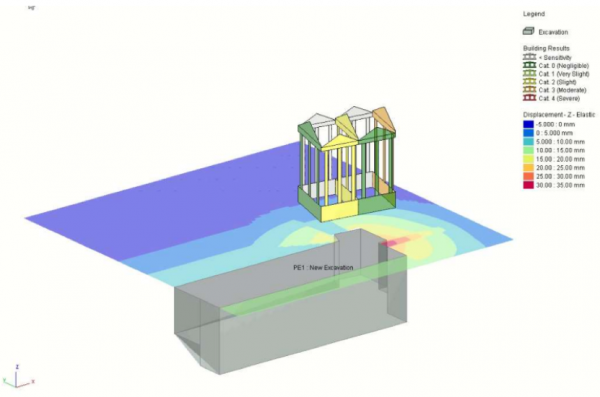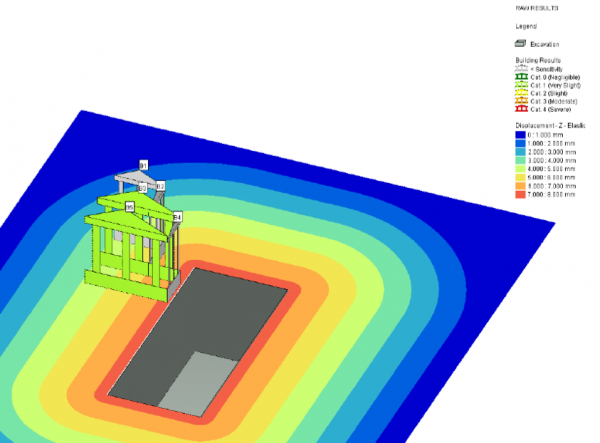Collaboration gets £multi-million project across the line
by Peter Shakespeare | Nov 3rd 2022

Collaboration gets £multi-million project across the line
3rd November 2022
Geotechnical • Specialist Services
Ground & Water was instructed to consult on a high value proposed development involving the erection of five single family houses in Central London close to the Brompton Road in Kensington. The proposed development included two deep basement levels plus sub-basement plant room.
Our Client
Our client was a high profile Central London property developer. Their development would share a piled wall with an adjacent property and required a detailed ground movement assessment. With numerous stakeholders involved a collaborative approach involving our client, another specialist geotechnical consultant, the developer of an adjacent site and its geotechnical consultants was the only way to progress this project.
Preliminary-Assessment
Ground & Water was initially tasked with assessing the potential damage to the walls of surrounding building from the development of the deep basement. We were originally instructed to produce a basement impact assessment and ground investigation report for the project, with no scope of undertaking the ground movement assessment. The ground movement assessment was instead instructed to another specialist geotechnical consultancy, which uses finite element analysis (FEM) software Geo5.
Our Challenge
The initial assessment of building damage was assessed using the Burland et al (1977) damage category criteria. Ground movement curves were derived using two methods:
- Inputting the displacements from the Geo5 finite element analysis in to XDISP
- Empirical ground movement curves based on CIRIA C760 case studies of secant piled walls installed in stiff clay (CIRIA C760).
Using the CIRIA C760 ground movement curve for a secant piled wall in stiff clay resulted in a maximum damage category of Very Slight (Category 1). The results of the FEM analysis resulted in a maximum damage category of Moderate (Category 3) – the orange wall in the picture below.

Our challenge was that given that one of the analysis found unacceptable levels of damage to buildings, a more considered approach was required.
The Ground & Water Approach
Working with the other specialist geotechnical consultancy Ground & Water contacted the obtained the ground movement data from the adjacent property, via its developer and its geotechnical consultants. Given that a basement of similar size, construction and design had recently been developed and any resulting ground movements around that basement monitored; ground movement curves could be created based on the real data from the adjacent property. Ground & Water was then able to produce a model for the new development within its Oasys XDISP software. A realistic horizontal ground movement curve and a realistic vertical ground movement curve were produced, as well as horizontal and vertical worst case curves.
Based on the realistic ground movement curves, Negligible (Category 0) damage was noted for both walls, increasing to Negligible (Category 0) to Very Slight (Category 1) damage based on worst case conditions – shown in the following figure.

The Outcome
The evidence gathered allowed the potential ground movement and resulting damage to nearby walls to be accurately and realistically assessed, leading to the reduction of damage categories to acceptable levels.
Ground & Water’s collaborative approach and ability to go the extra mile for its client, meant that as the damage categories were downgraded to acceptable levels, the project was accepted and approved by the City of Westminster planning committee.
Basement impact assessments and ground investigations are a specialism of Ground & Water. Get in touch today if you need help getting your project approved.


